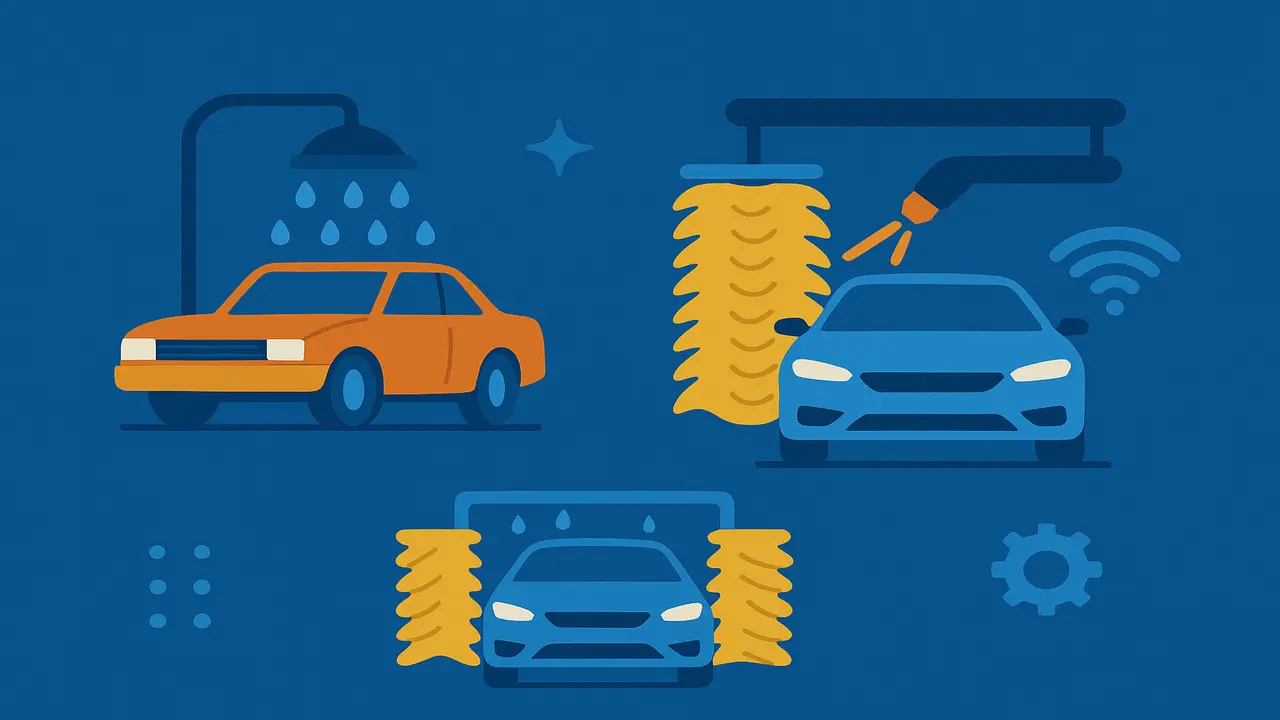From hand scrubbing to sophisticated automated systems, car cleaning has changed over time. New technology has improved the speed, effectiveness, and environmental friendliness of car washes over time. Better car washing solutions are being offered by the industry’s ongoing innovation.
Early Car Washing Methods
Cars were hand-washed before automated methods. Automobile owners utilized rags, soap, and buckets in the early 1900s. Although the pressure was low, some people used garden hoses. Car cleaning took a lot of time and was frequently uneven.
The First Semi-Automated Car Wash
The first vehicle wash was in Detroit in 1914. For short, they called it the “Automated Laundry.” Workers manually pushed cars through a tunnel. Several people cleaned, washed, and dried the cars at every stage. It was better, but it still required improvement.
The Introduction of Conveyor Car Washes
Conveyor-driven vehicle washes appeared in the 1940s. Cars were put on a moving belt by this arrangement. They passed through cleaning stations on the belt. Manual labor was decreased via revolving brushes, soap dispensers, and sprayers. With this, more effective washing techniques were introduced.
Rise of Fully Automated Systems
Systems for car washes were completely mechanized in the 1960s. It was all done by machines. Soft fabric strips were used in place of rough bristles to stop scratches. Automated drying systems use powerful blowers to remove water. As a result, car washing gets quicker and more dependable.
Touchless Car Wash Technology
Touchless car washes became more and more common by the 1980s. Vehicles were cleaned without brushes using powerful detergents and high-pressure water jets. Depending on the size of the car, sensors assisted in adjusting the water pressure. This lessened the possibility of paint damage and scratches.
Water Recycling Systems
In the 1990s, water recycling technologies were implemented due to environmental concerns. By filtering and reusing water, these systems decreased waste. Several car washes have shifted to biodegradable soaps to cut down on pollution. Water-saving technology has become more significant.
Eco-Friendly Car Wash Innovations
Eco-friendly car washes gained popularity in the 2000s. Some invented steam cleaning, which removed grime with great heat and little water. Others created waterless car wash systems that cleaned without rinsing with specialized chemicals. These developments contributed to resource conservation.
Smart Car Wash Technology
Artificial intelligence (AI) and the Internet of Things (IoT) have improved car washes. Modern car washes employ sensors to measure the amount of dirt. They adjust the water pressure and detergent concentrations accordingly. Customers can now use smartphone apps to schedule washes. Some systems additionally offer tailored services and vehicle recognition.
Advanced Coatings and Nanotechnology
The use of nanotechnology in auto care is growing. Some businesses create water- and dirt-repellent coatings that clean themselves. These coatings reduce the frequency of washings. Cars may remain cleaner for longer as technology develops.
Fully Robotic Car Washes
These days, car washes are introducing robots. They clean precisely without the need for human assistance. These AI-powered robotic systems can follow the curves of a car. They guarantee complete cleaning while using less water and chemicals.
Waterless Car Wash Systems
In recent years, waterless car wash technologies have become more popular. These techniques make use of microfiber cloths and environmentally friendly sprays. Because they require little to no water, they are ideal for areas vulnerable to drought. This option is currently available from several professional detailing services.
High-Pressure Foam Systems
In recent years, foam-based washing has also improved. Vehicles are covered in thick, cleaning foam from high-pressure foam cannons. Because this foam dissolves dirt and grime, it makes rinsing easier.
UV and Infrared Drying Systems
Conventional drying techniques use air blowers. Infrared and UV drying technologies, however, are currently being tested. By using light-based drying, these systems utilize less energy. They also aid in maintaining the paint job of a car.
Also Read
- Nearly 30% of UK Drivers Believe Car Tax Should Be Based on Mileage — Survey
- Why Planes and Boats Escaped the Luxury Tax But Cars Didn’t
- Australia’s Headlight Confusion: Authorities Warn Drivers After Viral $250 Headlight Rule Goes Wild Online
- 2025 Hyundai Venue Facelift Launched in India – Full Details, Variants, and Price
- Royal Enfield Bullet 650 Unveiled at EICMA 2025: A Classic Legend Returns
